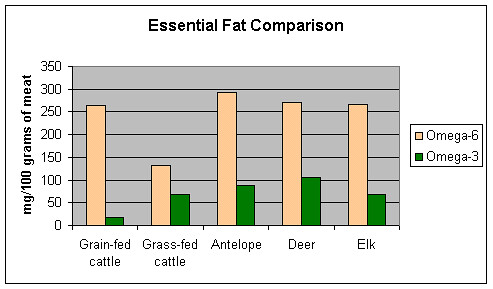The Benefits of Grass-Fed Beef
March 25, 2011 by PinoyOrganics
Filed under Food
DowntoEarth (DTE), a biodynamic farm in Dahilayan, Bukidnon, is promoting Philippine native and indigenous cattle breeds. Their grass-fed beef comes from the native Bali or Banteng and Chinese Yellow Cattle cross-bred with Nellore or Ongole and American Brahman cattle. The result of this cross breeding is a medium-framed, hardy animal, with notable physical strength. This breed is known for its ability to thrive under the harsh climatic, nutritional and sanitary conditions, frequently seen in Mindanao. Due to their hardiness and rustling ability, the native breed surpasses all other breeds even under conditions of poor quality grass, drought and areas with extreme rainfall. Calves are very strong, even standing up and suckling soon after they are born.
SOME BENEFITS
Support for Small Farmers
DowntoEarth Grass-Fed Beef is sourced from cattle that were raised by small farmers from remote areas all over Mindanao. Raising native cattle is economically viable for small farmers as they only need one or a few animals, with low capital for purchasing and maintenance. The cattle is also raised in the pasture or fed only grass, lowering feed cost. By buying native cattle from these areas in Mindanao, DTE is helps in ensuring food security and generating income for small farmers and agricultural laborers.
Pasture-Raised, No Hormones or Antibiotics
The hardy native cattle have been bred and raised for use as draft animals in small farms. Because of this, they have been raised on pasture, fed grass and without the use of any antibiotics or growth hormones. Heat and Insect Resistant
The native cattle is covered with loose skin and has sweat glands that are not only more but twice bigger than those of the European breeds. The resulting low- level of metabolism contributes to heat resistance. The native cattle! feeds less but often, generating less internal heat. It also possesses natural resistance to various insects, as its skin has a dense texture, making it difficult for blood sucking insects to penetrate. This native breed also have a well developed subcutaneous muscle layer which enables them to remove insects simply by shaking their coat.
Meat Quality
The beef from native cattle is very lean but substantially high in Omega-3 fatty acids. Omega-3 fatty acids are essential for normal growth and may play an important role in the prevention and treatment of coronary artery disease, hypertension, arthritis, other inflammatory and autoimmune disorders, and cancer.
Why Grass-Fed Beef?
According to Artemis P. Simopoulos, M.D. and Jo Robinson, authors of the authors book The Omega Diet the grain-fed beef that we habitually buy from supermarkets is deficient in Omega-3 fatty acids but high in Omega-6 fatty acids. Our usual diet is deficient in Omega-3s and overdosed with Omega-6s. This imbalance is known to cause heart disease, cancer, Attention Deficit Syndrome, diabetes and other ailments. Grass-fed beef on the other hand can be a healthy alternative and is recommended by dietitians. This is because grass-fed beef is leaner than grain-fed beef. It also has the recommended ratio of Omega-6 to Omega-3 acids (2:1 or better.) Also, grass-fed beef is loaded with natural vitamins and minerals, a good source of CLA (conjugated linoleic acid), fat that reduces the risk of cancer, obesity, diabetes, and a number of immune disorders. “Beef, in its natural grass-fed state, is a health food of the highest order.†Texas Grassfed Beef
DowntoEarth will be at The Producers’ Market starting this Saturday, March 26th. Meet the farm owner himself, Nicolo, and learn more about grass-fed beef and their other biodynamic products. The Producers’ Market is open every Saturday and Sunday at 6am until 2pm , and is located at Mercato Centrale, 8th cor 34th Ave., Bonifacio Global City.
Can you suggest the best Pinoy beef recipe you’ve ever tried and tested?



can i have down to earth’s contact number? 🙂 am glad that there’s someone offering grassfed beef now 🙂 been looking for it for a while now 🙂
Kathleen, meet the producers in person! They have a booth in The Producers Market tent in Mercato Centrale every Saturday, from 7am til 2pm. They are usually in Cagayan de Oro during weekdays.
This is great! Would you know if they supply close to Quezon City, though?
Hi Martine. Grass-fed beef is available at the Producers Market in Mercato Centrale only. Come and join us on the 30th!
http://www.pinoyorganics.com/2011/04/11/the-producers-market-at-mercato-centrale/
Hi, we are in the dairy goat industry.
A good majority of our practices dwells on the use of organic (e.g, goat manure, e.m., no chemical insecticide and fertilizer, no dehorning, etc.)
I want to know if it is possible for us to comply with organic farming. We do use anti-biotics only for injured and sick goats. If they are in anti-biotics, they are immediately pulled out of the dairy line. I have read from an EU ruling that the use of anti-biotics for such cases is allowed. We do not use growth hormones or any other hormones to increase milk production.
Please send you response to my email. Many thanks and best regards. JOEY
Are the beef in tagaytay also grassfed? because their meat seems to be different from the supermarkets. anyway, how will i know whether the beef is fed grain or fed with grass? can you determine that by the quality of the beef? or you really need to ask the farmers themselfs?
It’s hard to tell the difference between grass-fed and not. We have been buying (and eating) grass-fed meat and more than the appearance,it’s in the taste. GF beef is a bit tougher but tastier.